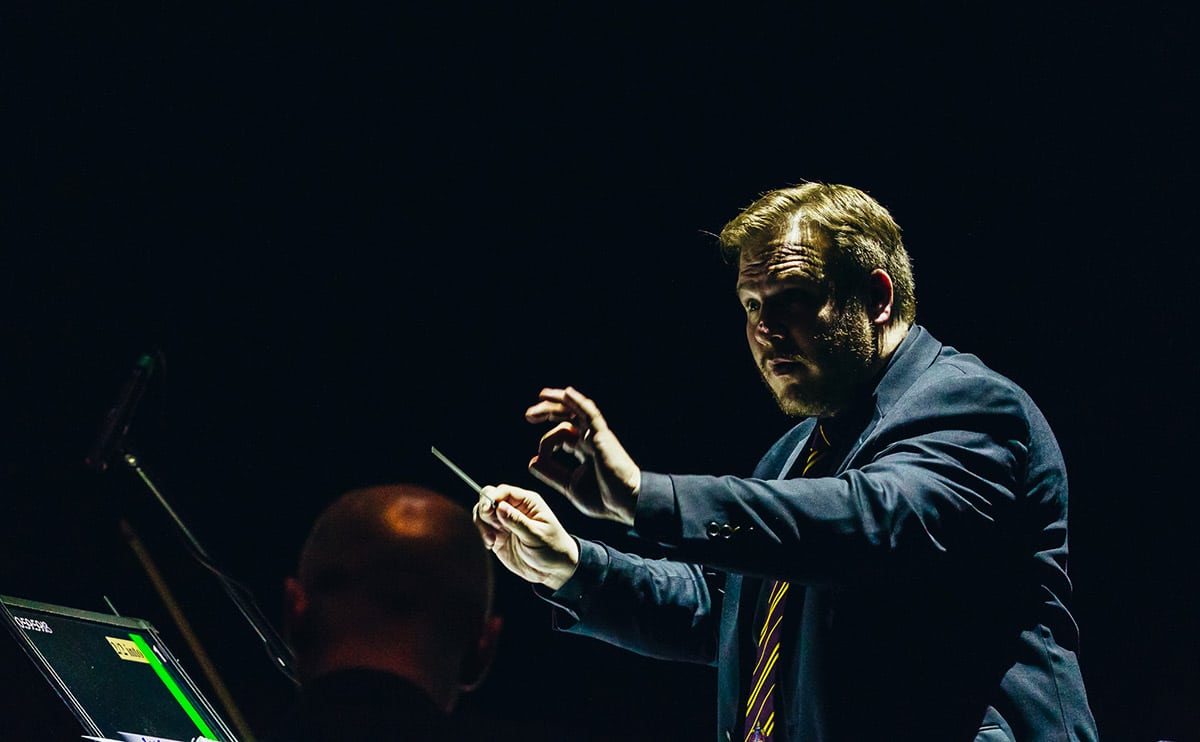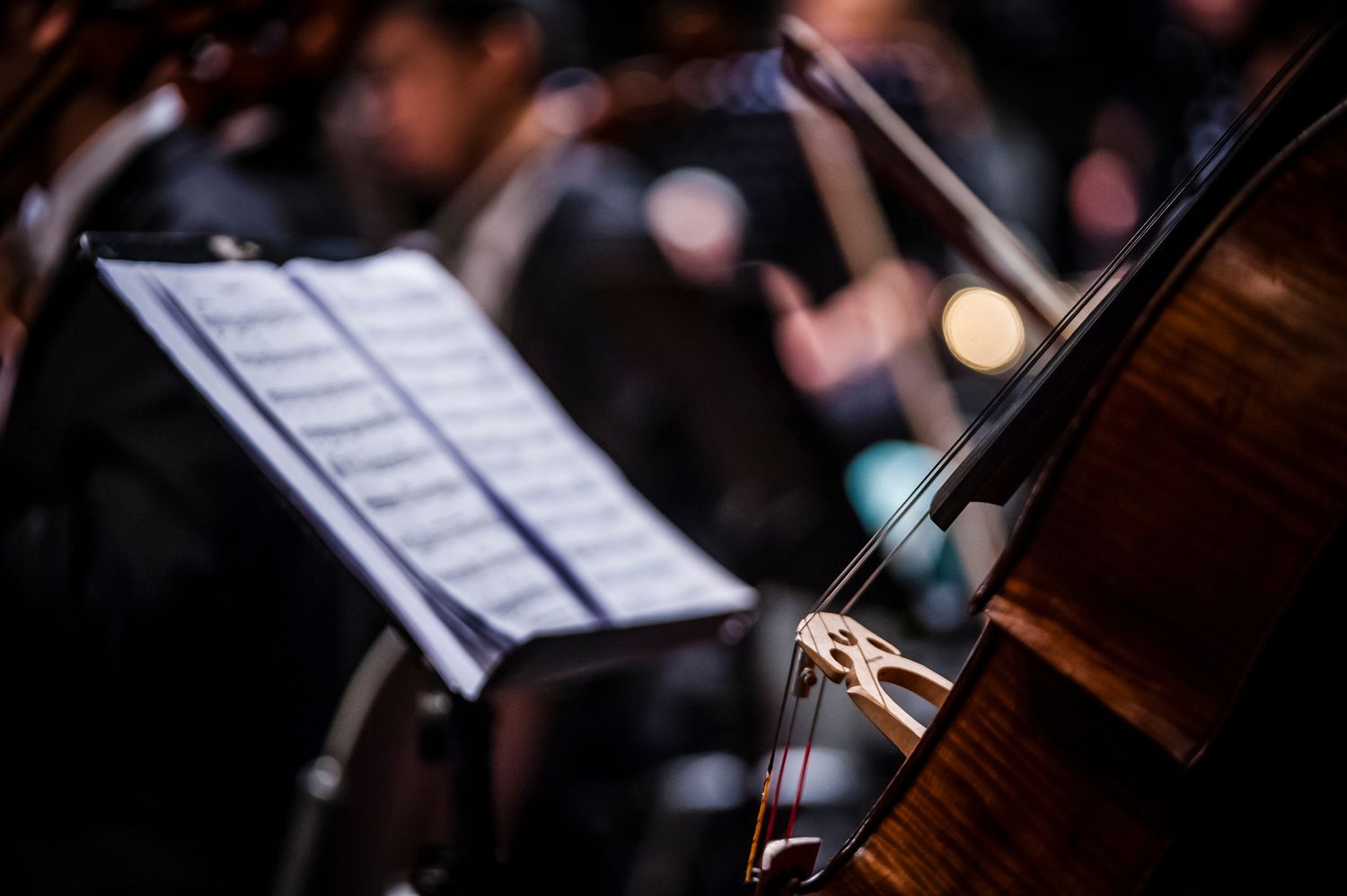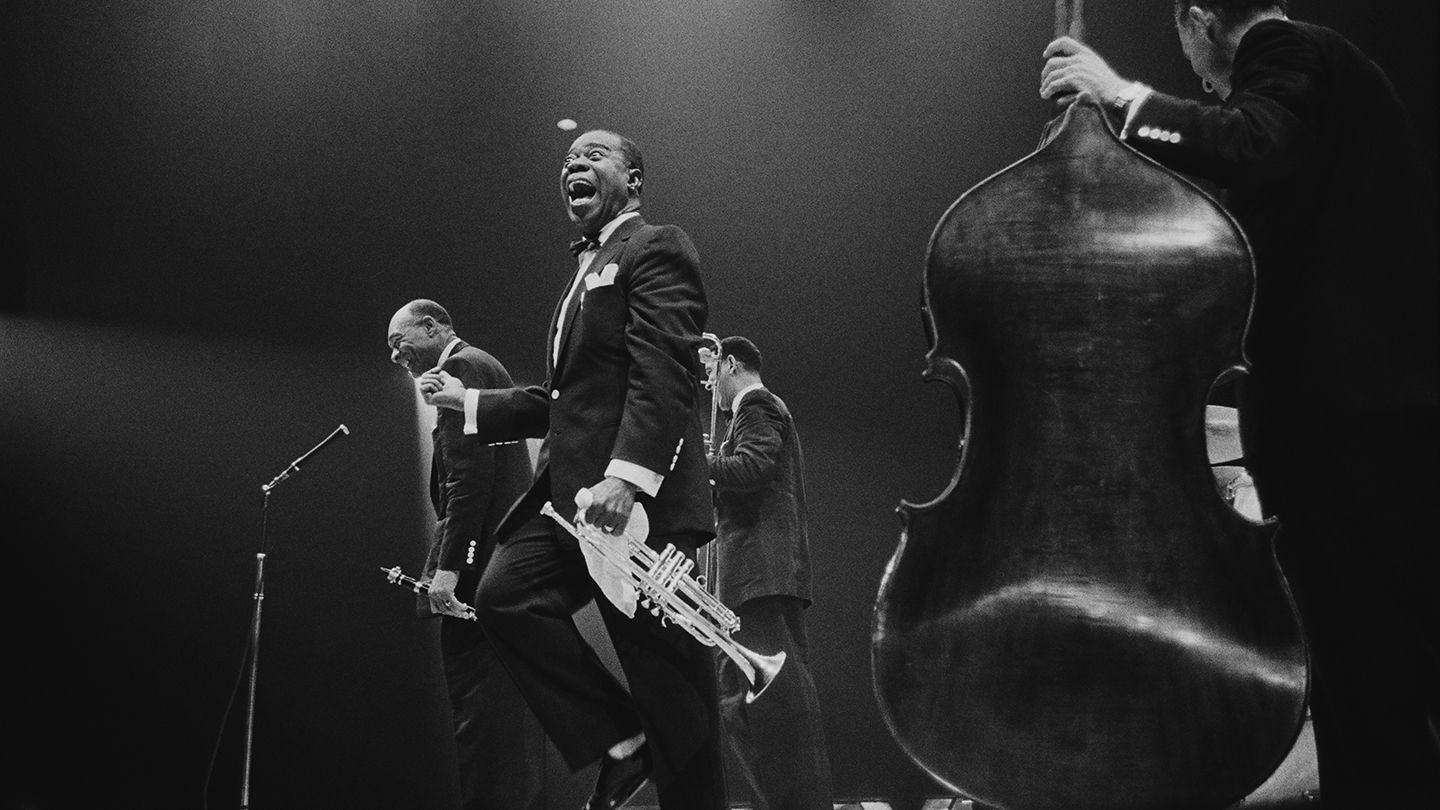Home>Production & Technology>Tempo>What Kind Of Tempo Does Sad Music Have


Tempo
What Kind Of Tempo Does Sad Music Have
Modified: January 22, 2024
Discover the tempo of sad music and explore its emotional impact. Learn how different tempos can evoke specific feelings and create powerful musical experiences.
(Many of the links in this article redirect to a specific reviewed product. Your purchase of these products through affiliate links helps to generate commission for AudioLover.com, at no extra cost. Learn more)
Table of Contents
Introduction
Music has the power to evoke a wide range of emotions, and one of the most evocative emotions is sadness. Sad music holds a special place in our hearts and has the ability to touch us deeply. But have you ever wondered why some sad music feels so poignant and melancholic? One of the key factors that influences the emotional impact of sad music is tempo.
Tempo refers to the speed or pace at which a piece of music is played. It plays a vital role in shaping the mood and atmosphere of a musical composition. A fast tempo can create feelings of excitement and energy, while a slow tempo often evokes a sense of calm and relaxation. When it comes to sad music, the tempo is crucial in conveying a sense of sorrow and melancholy.
In this article, we will explore the relationship between tempo and sad music. We will delve into the characteristics of sad music tempo, the emotional responses it elicits, and the role it plays in expressing sadness. So, get ready to dive into the world of sad music tempo and discover the power it holds in captivating our hearts and minds.
Understanding Tempo in Music
To fully grasp the significance of tempo in sad music, it’s essential to have a clear understanding of what tempo actually means in the context of music. Tempo refers to the speed at which a musical piece is performed, and it is typically indicated by a specific notation on sheet music or expressed in beats per minute (BPM).
Tempo sets the pace and rhythm of a piece, dictating the overall feel and energy. It influences the listener’s perception and emotional response to the music. A faster tempo can create a sense of urgency, excitement, and even joy, while a slower tempo tends to evoke feelings of calmness and relaxation.
Tempo is a crucial component in music composition and performance as it helps establish the desired mood and effect. It acts as a guide for the musicians, shaping their interpretation of the piece and allowing them to convey the intended emotions to the audience.
In musical notation, tempo is indicated by specific terms such as “allegro” (fast), “moderato” (moderate), “andante” (walking pace), or “adagio” (slow). These terms provide a general guideline, but the actual tempo can vary within a range. Additionally, tempo can also be measured using BPM, where a higher number indicates a faster tempo and vice versa.
While tempo is an essential element in all genres of music, including classical, pop, rock, and jazz, its significance becomes particularly pronounced in sad music. The speed at which sad music is played heavily influences the emotions it evokes and the impact it has on the listener’s emotional state.
Now that we have a basic understanding of tempo in music, let’s delve deeper into the influence of sadness on tempo and explore the characteristics of sad music tempo in more detail.
The Influence of Sadness on Tempo
Sadness has a profound impact on the tempo of music. When it comes to expressing melancholy and sorrow, slower tempos tend to dominate. The slower pace allows for a more introspective and reflective experience, giving the listener time to immerse themselves in the emotions conveyed by the music.
There are a few reasons why sadness often translates into slower tempos in music. Firstly, a slower tempo allows for a greater sense of space and allows each note and phrase to resonate more deeply. This creates a sense of longing and melancholy that is characteristic of sad music.
Furthermore, slower tempos in sad music enable the artist to convey a sense of vulnerability and sensitivity. The deliberate pacing allows for the subtle nuances and delicate expressions to shine through, amplifying the emotional impact of the music.
It is also worth noting that the choice of tempo in sad music is influenced by cultural and historical factors. Different cultures and time periods may have their own conventions when it comes to expressing sadness through tempo. For example, classical compositions from the Romantic period often feature slow and lamenting tempos, while certain genres of blues music may incorporate a slightly faster tempo to convey a sense of longing and resignation.
Overall, sadness has a profound influence on the tempo of music. Slower tempos provide the necessary space and introspection for the emotions of sadness to be fully expressed, while also creating an immersive and poignant experience for the listener. Now, let’s explore in more detail the characteristics of sad music tempo and the emotional responses it elicits.
The Characteristics of Sad Music Tempo
When it comes to sad music, tempo plays a crucial role in shaping its overall character and emotional impact. The characteristics of sad music tempo can vary, but there are a few common elements that are often associated with this genre.
One of the defining characteristics of sad music tempo is its slow pace. Slow tempos allow for a lingering, mournful quality that resonates deeply with the listener. The deliberate and measured pace of sad music allows for the emotions to unfold gradually, creating a sense of introspection and contemplation.
In addition to the slow tempo, sad music often incorporates long, sustained notes and chords. These sustained tones provide a sense of longing and create a haunting atmosphere that intensifies the emotional impact of the music. The use of sustained notes adds an ethereal quality, enhancing the depth and beauty of the sad melodies.
Another characteristic commonly found in sad music tempo is a lack of rhythmic complexity. While other genres of music may feature intricate rhythms and syncopation, sad music tends to have simpler rhythmic patterns. This simplicity allows for a greater focus on the emotive qualities of the music, allowing the listener to connect more deeply with the melancholic melodies.
Furthermore, sad music tempo often incorporates moments of pause and silence. These moments of stillness provide a sense of tension and anticipation, heightening the emotional impact when the music resumes. The use of pauses and silences creates a sense of breathlessness, enhancing the overall emotional journey of the listener.
Overall, the characteristics of sad music tempo are marked by slow, deliberate pacing, long sustained notes, simplicity in rhythm, and strategic use of pauses and silences. These elements work together to create a sense of profound sadness and emotional depth, enveloping the listener in a world of melancholy and introspection.
Emotional Responses to Sad Music Tempo
Sad music tempo has a powerful impact on our emotions. The slow and poignant pace of sad music often triggers a range of emotional responses in listeners, ranging from empathy and nostalgia to introspection and catharsis.
One of the primary emotional responses to sad music tempo is a sense of melancholy. The slow pace and haunting melodies create a somber atmosphere that resonates with our own experiences of sadness and loss. The music can evoke feelings of longing, heartbreak, and introspection, allowing us to connect with our own emotions on a deeper level.
Furthermore, sad music tempo has the ability to evoke a strong sense of empathy. The deliberate pacing and emotional depth of the music allow us to tap into our own experiences of sadness and empathize with the emotions expressed in the music. It can create a sense of shared emotional connection, reminding us that we are not alone in our struggles and sorrows.
Listening to sad music with a slow tempo can also evoke feelings of nostalgia. The reflective and introspective qualities of the music often transport us to specific moments in our past, triggering memories and a longing for times gone by. It can be a bittersweet experience, allowing us to revisit and process our memories in the context of the present.
Despite the initial sadness, sad music tempo has the potential to provide a sense of catharsis and emotional release. The slow pace and emotional depth of the music create a safe space for us to immerse ourselves in our emotions and let them flow. It can be a therapeutic experience, allowing us to acknowledge and process our own sadness in a healthy and constructive way.
Ultimately, the emotional responses to sad music tempo are deeply personal and subjective. The impact of the music will vary from person to person, depending on individual experiences and emotional sensitivities. However, it is undeniable that sad music tempo has the power to evoke profound emotional responses and provide a meaningful experience for listeners.
The Connection Between Tempo and Sad Emotions
The connection between tempo and sad emotions in music is a fascinating one. The tempo of a musical piece has the ability to directly influence and evoke various emotions, including sadness. Understanding this connection can help us appreciate the power of music to evoke and express our deepest emotional states.
Slower tempos tend to be closely associated with sad emotions. The unhurried pace allows for the emotions to linger and unfold gradually, creating a sense of melancholy and introspection. The notes and melodies played at a slower tempo have a profound impact on our emotional state, capturing the essence of sadness and allowing us to empathize with the emotions being conveyed.
Research has shown that when sad music is played at a slower tempo, it activates specific brain regions associated with emotional processing, such as the amygdala and the prefrontal cortex. The slower tempo allows for a deeper emotional connection as it provides more time for emotional processing and reflection.
Additionally, the connection between tempo and sad emotions can be attributed to the concept of musical tension and release. Sad music often creates a sense of tension through slow tempos, unresolved chords, and melodic dissonance. This tension builds over time, intensifying our emotional response. At key moments, the music releases this tension, providing a cathartic release and allowing us to experience a wave of emotions.
It is worth noting that the connection between tempo and sad emotions is not limited to slower tempos alone. There can be variations within sad music that incorporate different tempos to evoke different shades of sadness. A moderate tempo, for example, can convey a sense of longing or wistfulness, while a very slow tempo can evoke a deeper and more profound sense of sorrow.
Overall, the connection between tempo and sad emotions in music is a profound and intricate one. The choice of tempo allows composers and performers to effectively communicate and express the nuances of sadness, while also providing listeners with a transformative and cathartic experience. The next time you find yourself moved by a melancholic piece of music, pay attention to the tempo and how it influences your emotional response.
The Role of Tempo in Expressing Sadness
Tempo plays a crucial role in expressing sadness in music. It serves as a powerful tool for composers and performers to convey the depth of emotions associated with sadness and allows listeners to connect with those emotions on a profound level.
One of the primary ways in which tempo expresses sadness is through the pacing of the music. Slower tempos are commonly associated with sadness as they create a sense of introspection and contemplation. The deliberate and measured pace of a slow tempo allows for the emotional weight of the music to be fully felt, enhancing the poignancy and depth of the sad melodies.
Moreover, the use of a slow tempo in expressing sadness provides space and time for the listener to process and reflect on their own emotions. The elongation of the musical phrases and the sustained notes allow for a deeper connection with the emotional content of the music, creating an immersive experience that resonates with the listener’s own experiences.
In addition, the dynamics within the tempo also play a significant role in expressing sadness. The use of soft and gentle dynamics at a slow tempo creates a sense of vulnerability and fragility, heightening the emotional impact of the music. The delicate and tender quality of the melodies captures the subtle nuances of sadness, drawing the listener into the emotional journey of the music.
Furthermore, the use of tempo variations within a sad composition can add depth and complexity to the expression of sadness. Gradual accelerandos or ritardandos can create a sense of ebb and flow within the music, reflecting the fluctuations of emotions associated with sadness. These tempo fluctuations allow for moments of tension and release, intensifying the emotional journey and captivating the listener.
Ultimately, the role of tempo in expressing sadness is to create a musical landscape that embodies the depth and complexity of human emotions. By carefully selecting and manipulating the tempo, composers and performers have the power to elicit a wide range of emotions, allowing listeners to connect with and explore the depths of their own sadness.
The Effects of Sad Music Tempo on the Listener
The tempo of sad music has profound effects on the listener, eliciting a range of emotional and psychological responses. The deliberate pace and emotional depth of slow tempo in sad music create a unique and powerful impact on the listener’s state of mind.
One of the primary effects of sad music tempo is its ability to evoke intense emotions. The slow pace allows for a deep connection to the emotions being expressed, amplifying the feelings of sadness, melancholy, and introspection. The listener is drawn into a world of emotions, experiencing a heightened sense of empathy and understanding towards their own feelings and the experiences of others.
Sad music tempo can also serve as a form of emotional catharsis. The slow and contemplative pace provides a safe space for the listener to explore and release their own pent-up emotions. It allows for a sense of release and emotional release, offering comfort and solace in times of sadness.
Furthermore, sad music tempo has been found to have therapeutic effects. Research has shown that slow tempo music can promote relaxation, reduce stress, and even alleviate symptoms of depression and anxiety. The soothing and meditative qualities of sad music tempo can create a calming and comforting environment, offering a sense of solace and emotional support.
In addition, sad music tempo has the power to trigger nostalgic memories and associations. The slow and reflective pace allows the listener to reminisce and reconnect with past experiences, invoking a sense of longing and nostalgia. This can be a bittersweet experience, providing a sense of comfort and emotional connection through shared memories.
Moreover, sad music tempo can inspire introspection and self-reflection. The slower pace allows for deeper contemplation and introspection, encouraging the listener to explore their own emotions and thoughts. It can serve as a catalyst for personal growth and self-awareness, providing a space for emotional exploration and introspective journeys.
Overall, the effects of sad music tempo on the listener are profound and multi-faceted. It evokes intense emotions, offers emotional catharsis, promotes relaxation, triggers nostalgia, and encourages introspection. By immersing themselves in the slow tempo of sad music, listeners can embark on a transformative and cathartic emotional journey.
Conclusion
Tempo plays a significant role in expressing and evoking sadness in music. The slow and deliberate pace of sad music creates a profound emotional impact, allowing listeners to connect with their own experiences of sadness and empathy for others. The characteristics of sad music tempo, such as a slow pace, long sustained notes, and simplicity in rhythm, contribute to the evocative and introspective nature of the genre.
The connection between tempo and sad emotions is a deeply personal experience, with the ability to elicit a range of emotional responses. Sad music tempo has the power to evoke feelings of melancholy, empathy, nostalgia, and even provide a therapeutic release for the listener. It engages our emotions on a visceral level, offering a cathartic journey through sadness and introspection.
Moreover, sad music tempo transcends cultural and historical boundaries. Different genres and time periods incorporate their own conventions and nuances in expressing sadness through tempo. However, the overall effect remains the same – the conveyance of deep and poignant emotion through the deliberate pacing and emotional depth of the music.
In conclusion, tempo is a crucial element in the expression and experience of sadness in music. It shapes the mood, atmosphere, and emotional impact of sad music, offering a powerful means of communication and connection. The slow and intentional pace of sad music tempo creates a space for introspection, empathy, and emotional release. Through its ability to touch our hearts and evoke profound emotions, sad music tempo holds a special place in the human experience.











